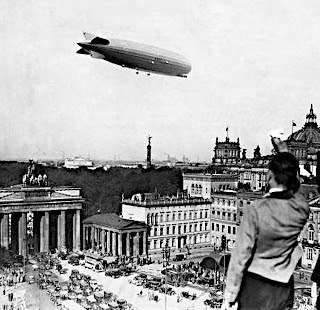04 January 2008
03 January 2008
Non-Farm Payrolls Preview - December 2007
Birth Death Model aka Imaginary Jobs = +58,000
Net Non-Farm Payrolls NSA = -167,000
Please notice that there is often a very significant tinkering factor in the seasonal adjustment, since jobs creation is a highly variable number according to the time of the year. If we were inclined to fudge the numbers, this is where we would start.

NSA = Not Seasonally Adjusted
There is a Really Big 'But'
The Bureau of Labor Statistics likes to come out with a current month  number that is the 'headline' but quietly adjusts a few of the prior months, generally lower. No one pays attention to these revisions on Wall Street, but they are absolutely essential to understanding the true employment picture in the US. BLS occasionally also revises the entire sequence back a few years, when it turns out they have overcounted the total population (see The True Unemployment Figure, or Ghosting the Inconveniently Poor for details). If we were inclined to gild the lily a bit, the adjustment of prior months is a good place to move jobs forward in time, robbing October and November to pay December so to speak. Conversely, posting a weak number in the current month is a nice ploy IF you adjust the prior month higher (true pros will swipe those jobs from the month twice removed which almost no one looks at. See The Conservation of Fake Jobs in Statistical Methods Quarterly).
number that is the 'headline' but quietly adjusts a few of the prior months, generally lower. No one pays attention to these revisions on Wall Street, but they are absolutely essential to understanding the true employment picture in the US. BLS occasionally also revises the entire sequence back a few years, when it turns out they have overcounted the total population (see The True Unemployment Figure, or Ghosting the Inconveniently Poor for details). If we were inclined to gild the lily a bit, the adjustment of prior months is a good place to move jobs forward in time, robbing October and November to pay December so to speak. Conversely, posting a weak number in the current month is a nice ploy IF you adjust the prior month higher (true pros will swipe those jobs from the month twice removed which almost no one looks at. See The Conservation of Fake Jobs in Statistical Methods Quarterly).
The Number Worth Watching
The best indicator of the jobs performance of the economy is the twelve month moving average of net non-farm payrolls jobs seasonally adjusted, aka Jesse's Non-Bullshit Payrolls Indicator (NBPI).

Practical Matters: Bet the Over/Under?
The ADP employment report showed that the private sector added approximately 40,000 jobs in December according to their survey. If we add about 15,000 jobs for the government sector, which ADP does not include, then that gives us 55,000 which is a little light of consensus. We don't think ADP has a birth - death model either which adds imaginary jobs. Since BLS will be adding 58,000 or so, we *might* get a decent number over the consensus.
How would the Feds like to play this? And don't think they don't. The Jobs report has been subject to extensive pre-release executive review since the days of LBJ. We aren't sure, but if we were betting we'd say a weakish number with an upward revision to November that brings it up to a very respectable number. That will blunt the concern about the economy, and still give stocks some assurance of a Fed 25 bp cut, without tanking the dollar which, after all, is the name of the game, at least for now.
Let's see what happens.
02 January 2008
US Stock Market in Presidential Election Years
Stock Market Performance in Election Years with Republican Incumbents Click on this link, then scroll down to see the charts.
We're not big on comparisons since
 there are so many different variables to consider. But the theory would seem to be that if it is in their power, big business will step in at some point and boost the stock market this year, to help keep the November elections from destroying the Republican party.
there are so many different variables to consider. But the theory would seem to be that if it is in their power, big business will step in at some point and boost the stock market this year, to help keep the November elections from destroying the Republican party.Here's one example, 1932, in which business was NOT able to turn the markets significantly higher in time to secure the election for the Republicans, but did manage to put in a mid-year bottom and rally, although they could not make it stick. There are those (hat tip to ContrarianBear at WallStreetBear.com) who predicted, very early on in his presidency, that George W. Bush would be remembered as a second Hoover. Let's see if that analogy holds true.
The Chinese and other nations and central banks may be a significant exogenous factor (economist jargon for wild card) in this scenario.
P.S. Here's a fun fact posted after the close of trading. Bloomberg says that today was the worst first trading day of the year for stocks since 1983, AND that the Dow came within 1/10 of one percent of setting the worst opening day of trading since 1932. Poetic.
































